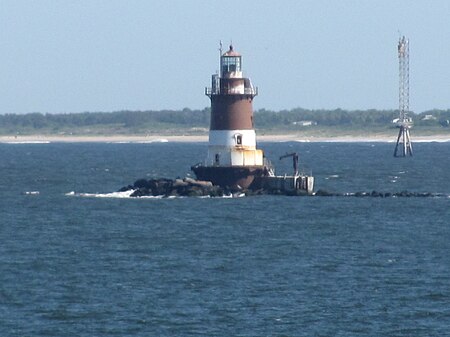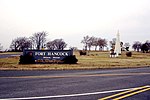Romer Shoal Light
1898 establishments in New JerseyLighthouses completed in 1898Lighthouses on the National Register of Historic Places in New JerseyNational Register of Historic Places in Monmouth County, New JerseyNew Jersey Register of Historic Places ... and 1 more
Transportation buildings and structures in Monmouth County, New Jersey

Romer Shoal Light is a sparkplug lighthouse in Lower New York Bay, on the north edge of the Swash Channel, about 3⁄4 nautical mile (1.4 km; 0.86 mi) south of Ambrose Channel and 2+1⁄2 nautical miles (4.6 km; 2.9 mi) north of Sandy Hook, New Jersey, in the entrance to New York Harbor. It is in New Jersey, very close to the border with New York. Named as Romer Shoal Light Station, it was added to the National Register of Historic Places on January 24, 2007, for its significance in architecture, engineering, transportation, and maritime history.
Excerpt from the Wikipedia article Romer Shoal Light (License: CC BY-SA 3.0, Authors, Images).Romer Shoal Light
North Hartshorne Drive,
Geographical coordinates (GPS) Address External links Nearby Places Show on map
Geographical coordinates (GPS)
| Latitude | Longitude |
|---|---|
| N 40.513006388889 ° | E -74.01352 ° |
Address
Romer Shoal Light
North Hartshorne Drive
New Jersey, United States
Open on Google Maps











